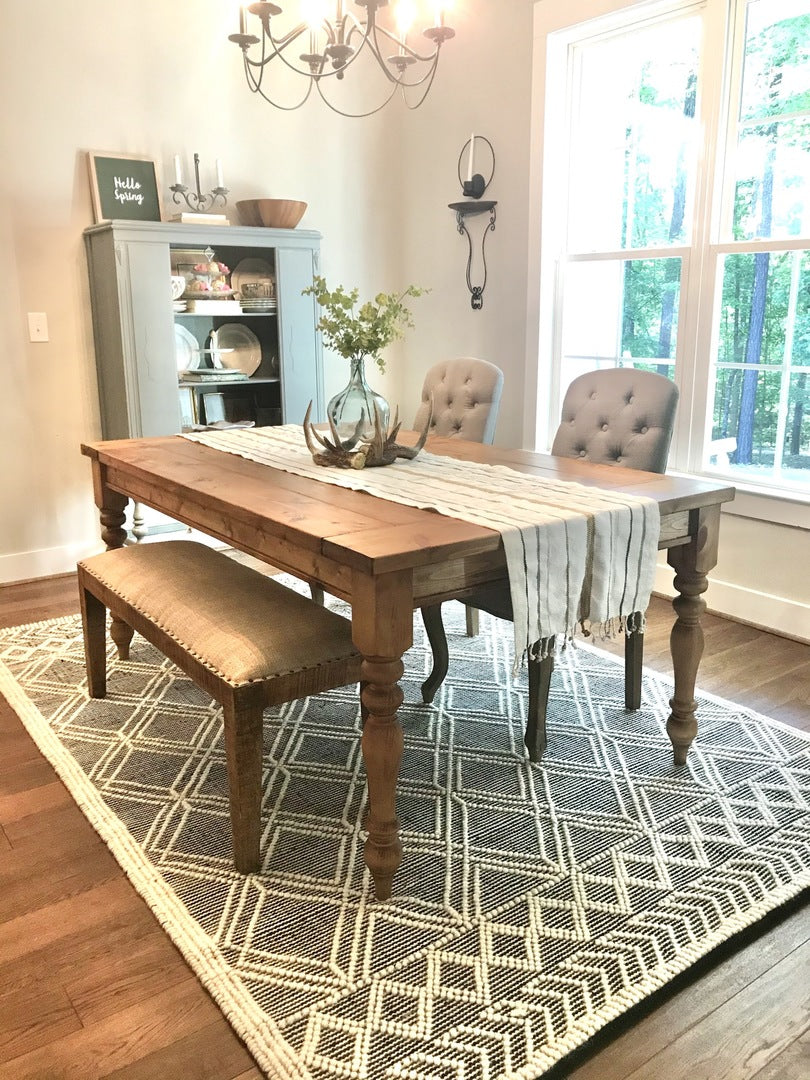Dining Room Table Legs That Integrate Functionality and Modern Style
Wiki Article
A Detailed Check Out Table Leg Styles: Discovering the Ideal Suit
Picking the ideal dining table leg design is critical for both visual appeal and sensible performance. Conventional four legs use ageless elegance and security, while the pedestal base gives boosted legroom and a contemporary appearance. For those with larger tables, trestle legs ensure tough support, whereas barrette legs present a mid-century modern ambiance with their minimalist layout. The x-shaped legs blend modern style with boosted stability. Each of these alternatives brings distinct advantages, making the option more than simply a matter of choice. Explore additionally to discover which design perfectly matches your eating area and way of living.Traditional 4 Legs
Amongst the various sorts of dining table leg designs, the typical four-leg design stays a timeless selection for several houses. This timeless configuration offers an unified blend of performance and appearances, making it a seasonal fave. Four legs provide balanced support, making sure the table stays secure and efficient in birthing substantial weight. This is especially advantageous for homes that frequently host large events or utilize their table for multiple functions, such as work or crafting.From a visual viewpoint, the conventional four-leg style can be easily adjusted to different interior styles. Whether crafted from timber, steel, or a combination of materials, these legs can be delicately carved, smooth and minimalistic, or anything in between. Their flexibility allows them to complement both rustic and contemporary settings flawlessly.
In addition, the simple structure of the four-leg layout promotes convenience of motion and positioning within a space. Unlike even more complex bases, this style lessens blockages, giving sufficient legroom for diners. In recap, the typical four-leg table leg design weds withstanding sophistication with practical performance, making it a sharp selection for those looking for both kind and feature in their eating furnishings.
Pedestal Base
Frequently celebrated for its stylish and space-efficient layout, the stand base is a notable option to the typical four-leg setup in eating table leg designs. Without corner legs, diners are afforded higher freedom of movement, making it an excellent choice for round and oval tables that promote more intimate and inclusive celebrations.The main column itself provides a canvas for complex layouts and artistic expressions, including an aspect of visual rate of interest under the table. In recap, the pedestal base combines capability with style, making it a refined and sensible option for diverse eating environments.
Trestle Legs
Trestle legs offer a robust and timeless structure for eating tables, characterized by their horizontal cross-bracing and strong assistance light beams. Stemming from medieval times, this design has progressed yet visit this page kept its essential framework, making it a seasonal favorite in both conventional and contemporary setups. The informative post main trestle light beam, often sustained by two or even more upright blog posts, supplies outstanding stability, permitting bigger table lengths without the need for extra legs.A considerable benefit of trestle leg tables is the ample legroom they offer. Unlike tables with four edge legs, the lack of blockages at the table's edges supplies unimpeded space for chairs and restaurants, improving convenience and accessibility. This makes trestle tables optimal for fitting bigger gatherings, whether in a dining-room or a reception hall.
The aesthetic convenience of trestle legs is noteworthy. Offered in a variety of products such as wood, steel, and composite, they can be completed to complement a variety of indoor designs. From rustic farmhouse to sleek modern-day designs, trestle legs can be personalized to match specific tastes. Their long-lasting charm and useful advantages make trestle legs an engaging choice for those seeking both style and usefulness in their table.
Barrette Legs

The allure of hairpin legs depends on their simpleness and adaptability - dining room table legs. Available in a variety of products, including steel and brass, they can be ended up in many shades to enhance different interior styles. Whether matched with a rustic wooden table top or a contemporary glass surface area, barrette legs effortlessly mix performance with a touch of vintage charm
Resilience is one more remarkable feature of barrette legs. Despite their fragile look, these legs are crafted to bear substantial weight, making sure the table continues to be steady and secure. In addition, they are relatively simple to mount, making them a prominent choice for do it yourself fanatics and expert furnishings manufacturers alike.
X-Shaped Legs

Created from materials such as steel, timber, or a mix of both, X-shaped legs can be customized to match numerous style choices. Steel legs often offer a sleek and industrial feel, ideal for loft-style apartment or condos and contemporary dining areas. On the various other hand, wooden X-shaped legs use a warmer, a lot more rustic appeal, ideal read this for farmhouse or diverse insides. The versatility in materials allows property owners to personalize their table to much better fit their total layout scheme.
In addition, the design behind X-shaped legs guarantees even weight circulation, decreasing the danger of tottering and improving resilience. This makes them especially fit for bigger table that call for added support. In essence, X-shaped legs mix functional engineering with modern aesthetics, making them an ageless choice for diverse eating settings.
Conclusion
An extensive understanding of table leg designs reveals the distinct features and benefits of each layout. Conventional four legs provide stability and classic allure, while pedestal bases offer legroom and a structured appearance. Trestle legs make sure robust support for larger tables, and barrette legs present a mid-century modern-day aesthetic. X-shaped legs integrate modern design with improved security. Picking the suitable leg design makes certain both useful and aesthetic fulfillment in any eating space.Report this wiki page